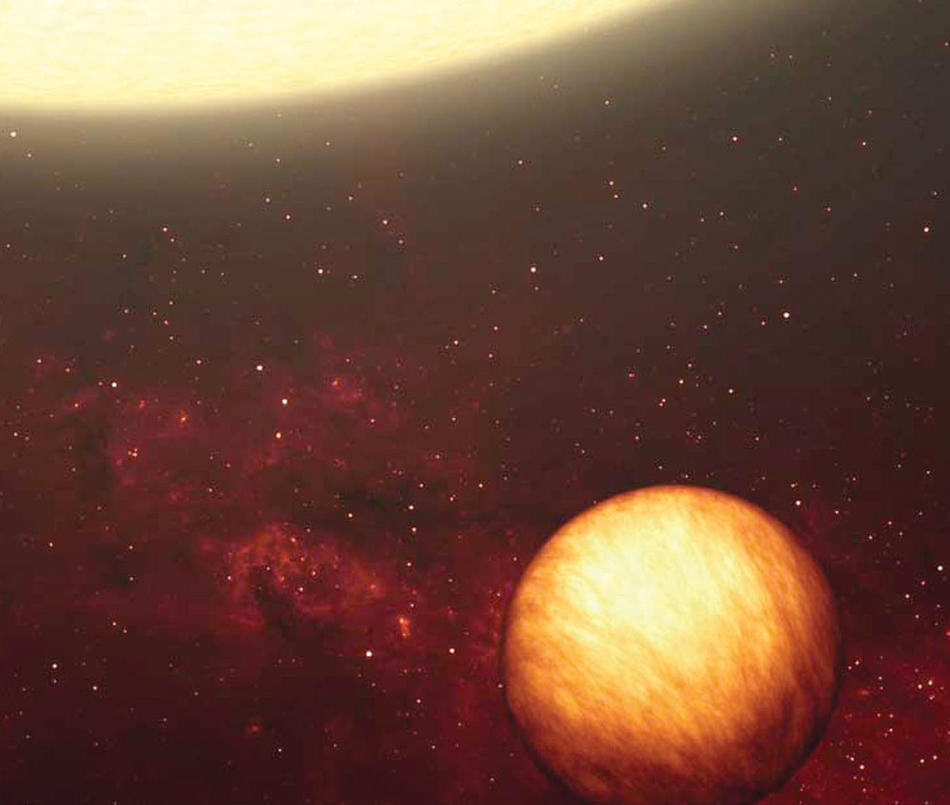Scorching an orange trail across the sky 40 light-years away from our solar system, the planet Upsilon Andromeda b cuts a tight path around its parent star, completing 80 orbits in the time Earth makes just one pass around the sun. Because Upsilon Andromeda b circles its parent star so closely, it’s pulled by an extraordinary gravitational force that causes it to be “tidally locked.” In other words, the planet spins on its axis at a precise speed such that the same side constantly faces the star.
Since spotting the planet in 1996, astronomers have known that Upsilon Andromeda b is tidally locked to its star—as are many planets with tight orbits. But a research team that includes 34-year-old Columbia astrophysicist Kristen Menou astonished the astronomy world this fall by demonstrating that wind inside the atmosphere of Upsilon Andromeda b barely redistributes heat, leaving one side of the planet a constant inferno and the other side a freezer, with a sharp distinction at the boundary.
“This is surprising because nature likes to equilibrate things,” says Menou, an assistant professor of astronomy and an expert in fluid dynamics. “It could be that winds on the planet simply are weak, but we’re not sure yet, partly because we know very little about what determines the strength of winds on other planets.”
Menou’s study, published in the November issue of Science, marks the first time astronomers have analyzed the climate on a planet outside our solar system. Neither had they examined closely an astronomical body where one side is permanently illuminated and the other side hidden in darkness. (Mercury, the planet closest to the sun, is almost tidally locked, rotating three times for every two orbits. Most moons in our solar system, meanwhile, are tidally locked to their planets, as is the moon to Earth, but their entire surface areas get sunlight as the planets around which they orbit, in turn, follow their own paths around the sun.)
Upsilon Andromeda b is eight times closer to its star than is Mercury to the sun. The giant ball of hydrogen and helium, therefore, is a hunk of gold to astronomers curious to study a new kind of atmosphere. Among the first of about 210 planets identified outside our solar system in the last ten years, Upsilon Andromeda b was observed closely only after the launch of NASA’s Spitzer Space Telescope in 2003. Menou and his colleagues used the telescope’s infrared sensors to measure heat all over the planet, concluding that temperatures reach 2500 degrees Farenheit on the sunny side while hovering around –10 degrees on the far side. Previously, only the size and mass of planets in other solar systems had been measured.
“Upsilon Andromeda b is very similar to Jupiter in size and in its gaseous composition,” says Menou, who coauthored the study with researchers from the University of California, Los Angeles, the University of Central Florida, Orlando, and other institutions. “The big difference is that it’s tidally locked. It’s almost as if we’ve been able to stop Jupiter in mid-rotation and study the effect that would have. This adds an incredible amount to what we know about the diversity of atmospheric conditions on other planets.”



